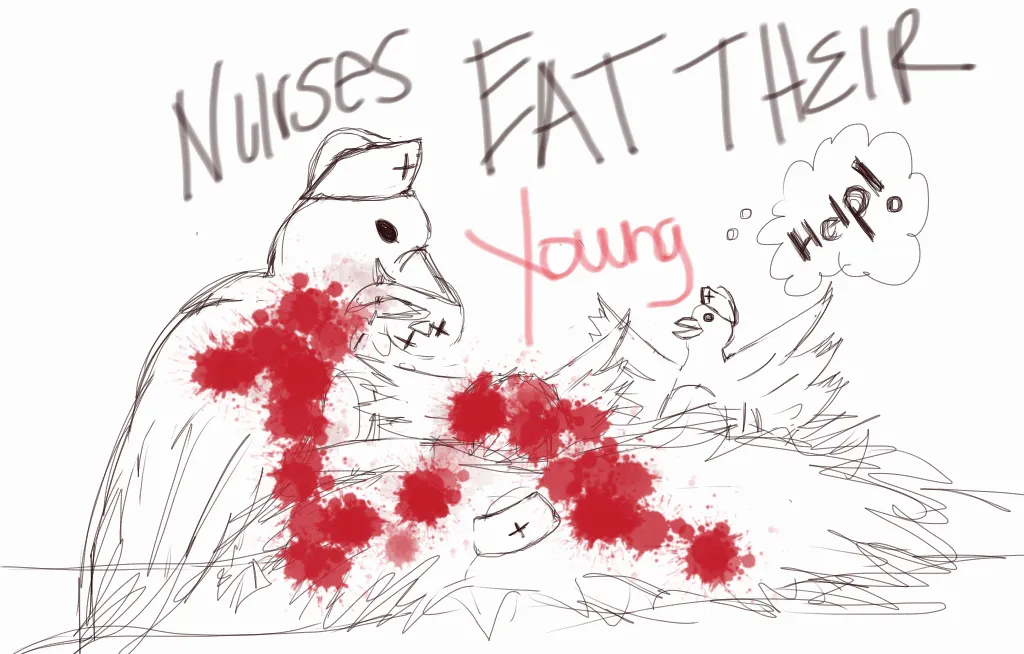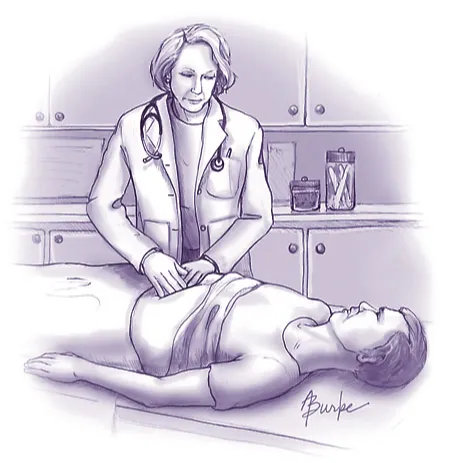Clinical Topics - Critical Care

Evidence Based Practice - Ultrasound Guided Peripheral IV Placement
Tags: catheters clinical nurse critical care Emergency nurse patient safety
This study aims to show that nurse driven placement of ultrasound guided peripheral intravenous access in the emergency department will improve patient care.
Read More →
Critical Care Chronicles
Tags: critical care Family Presence ICU intensive care unit support
Utilizing a journal for Intensive Care Unit patients to help manage the day to day challenges, physically and emotionally during their stay. Along for emotional release, better communication, or recollection of the events that took place.
Read More →
A Nursing Approach to the Efficacy of Corticosteroids in Community Acquired Pneumonia Treatment
Tags: critical care morbidity mortality nursing nursing community
This study aims to describe the use of corticosteroid therapy in treating community-acquired pneumonia (CAP), determine differences in morbidity and mortality between groups receiving corticosteroids and groups receiving standard care, and examine relationships among clinical outcomes. This literature review will explain and determine the effect of corticosteroids on patient recovery and assess the efficacy and safety of corticosteroids in CAP treatment.
Read More →
What's the Deal With Being Unprepared? Patient's Should Know...
Tags: cardiac emergency emergency department emergency room ER experiences
My husband has had 2 chest pain events within a week. As a nurse working primarily in cardiac nursing most of my career, I knew that any family member entering the arena of chest pain treatment would bear the wrath of my watchful eye. This has been An eye-opening, untoward (in my opinion), experience and an experience that can become a learning moment for many, as my skilled eye in emergency room settings can cause “jading” of an experience, but the perception should carry forward.
Read More →
Case Study: A Systematic Approach to Early Recognition and Treatment of Sepsis
Tags: assessment Case Study emergency department guidelines mortality prevention risk factors sepsis standard of care treatment
The term sepsis is often misunderstood. The public and often healthcare workers are unaware of the severity and high mortality rates this infection process has upon the world. Sepsis has vague symptoms that make diagnosis difficult. Often, sepsis is diagnosed in the later stages, when more obvious yet severe symptoms occur. This case study discusses a female who presents to the emergency department with sepsis secondary to pneumonia. Over the course of three days, the patient’s health quickly deteriorates, demonstrating the rapid progression of sepsis. Clinical findings, such as vitals signs, lab abnormalities, and symptoms of sepsis are discussed. The term bundle of care is presented to educate the reader on the golden standard of care for treatment of sepsis. This case study intends to increase community awareness and education to health care providers as well as providing an evidenced-based treatment guideline. More education and raised awareness will help prevent a deadly yet treatable infectious process.
Read More →
Immediate recognition of a dissecting Aorta
Tags: dissecting Aorta emergency recognition RRT
A summary of an encounter with a patient experiencing acute aortic dissection and recognizing an emergency.
Read More →
Importance of Interprofessional Collaboration, Communication and Teambuilding
Tags: appreciation collaboration communication emergency department team building
Collaboration is especially significant in the healthcare environment to meet the increasingly complex demands of patients with multiple co-morbidities. This article discusses the importance of interprofessional collaboration, communication, and team building.
Read More →
Ethics Exemplar
Tags: death emergency department ethical principles ethical principles in nursing ethical values ethics nursing ethics patient concern
When can you ethically call time of death?
Read More →
Rapid Response Team to the Rescue
Tags: Ambulance cardiac Doctors EMS Follow-Ups patient patient safety Rapid Response rapid response team rapid response team benefits Rescue Rescue Team RRT RRT Nurse RRT Nursing Team treatment working together
Rapid response team (RRT) purpose is to initiate immediate measures before patient deteriorates further and to educate the staff on activating the staff the Rapid response team.
Read More →
Retro-Clival Hematoma In The Pediatric Emergency Department
Tags: emergency room pediatric Retro Clival Hematoma
An unusual presentation of Retro-clival hematoma in the pediatric population
Read More →
What Are The Effects Of Floating to Nurses And Patient Care
Tags: float nurse Floating floating nurse floating nurses policy implications of float nursing floating policy Rapid Response stress
This article will explore how floating affects nurses and what management can do to help nurses relieve the stress, anxiety, and dissatisfaction of the nurses with the health care system.
Read More →
Current and Future Educational Challenges for the Nurse Educator
Tags: critical care education future of nursing graduates Nurse Educator nurse shortage nursing faculty teacher
This article explores current trends in nursing education.
Read More →
Factors Influencing Job Satisfaction in a Population of Critical Care and Emergency Nurses
Tags: critical care emergency emergency department Emergency Nurses Job Satisfaction night shift nursing leadership recruiting work environment
An exploratory study examining the contributing factors to nurse job satisfaction.
Read More →
Scope of Advanced Practice for Nurses in the United Kingdom
Tags: advanced practice apn clinical critical care ICU nursing leadership united kingdom
A 3,500 word article which critically discusses advanced practice for nurses within the United Kingdom. This was originally written for an MSc in Advanced Practice.
Read More →
I Will Not Die But Live!
Tags: advanced practice advice advocacy advocate bullying child culture depression emergency emergency department Emergency nurse Emergency Nurses heart attack investigation love medication mental health patient safety stress treatment Whistleblowers work environment wound care
Since leaving nursing in 2008 I have wanted to write about my experiences as an emergency nurse and what happened to me as a whistleblower. This is my story.
Read More →
Practicing Holistic Nursing as Intensive Case Management
Tags: advanced practice aging behavior Case Study emergency room Health Promotion holistic nursing methods mental health Mental Illness professional rn Psychiatry requirements treatment
Case study describing management of mentally ill client using holistic nursing methods.
Read More →
Six Sigma and Healthcare Finances
Tags: emergency department healthcare finance Medicare methodology performance sigma six sigma
This article is a brief primer on Six Sigma methodology and its impact on healthcare finance and nursing.
Read More →
Therapeutic Hypothermia Management
Tags: cardiac cerebral ischemia critical care hemorrhage Hypothermia perioperative recommendations Subarachnoid Hemorrhage Therapeutic Hypothermia therapy traumatic brain injury treatment
The leading cause of death in North America is heart disease, resulting in 611,105 deaths in the last year. Cardiac arrest accounts for more than 300,000 heart disease related deaths. Patients that receive early quality chest compressions and defibrillation present with increased survival rate, however, the degree of brain dysfunction varies. The advancement in cardiopulmonary resuscitation after cardiac arrest and the use of therapeutic hypothermia have minimized brain injury and improved neurologic outcome. In 2002, two studies demonstrated the use of therapeutic hypothermia after cardiac arrest proving to lower mortality rate and have neuroprotective effect. This led the American Heart Association and the International Liaison Committee on Resuscitation to recommend the implementation of therapeutic hypothermia after the return of spontaneous circulation post-cardiac arrest. Mild hypothermia is also utilized in traumatic brain injury to control cerebral edema and to decrease intracranial pressure (ICP), cerebral ischemia, and subarachnoid hemorrhage (SAH). However, clinical effectiveness for subarachnoid hemorrhage is still questionable. This paper will focus on the recommendations for therapeutic hypothermia after cardiac arrest as well as a briefly discuss its use for clinical trials in traumatic brain injury, cerebral ischemia, and SAH.
Read More →
Family Presence during a Code Blue
Tags: Code Blue Family Presence RRT RRT Nurse
I have been a nurse in the Cardiac Intensive Care Unit for over five years now, and have participated in many code blues. Some of these situations are appropriate for family to attend and some are not. Each situation is assessed individually to determine the appropriateness of family presence.
Read More →
One Day, One Shift, One Year
Tags: birth delivering a baby emergency department Emergency nurse ER restroom
Nurse's experience of delivering a baby in the restroom of an ED.
Read More →
Not Just Another Day
Tags: car accident death emergency room ER multiple injuries PACU saying goodbye
Brief story about helping someone say goodbye and knowing their loved one was cared for.
Read More →
Embracing Change
Tags: critical care Emergency nurse ICU ICU Nurse nursing experiences surgical unit transition
Exemplar of my nursing experience of my transition from ER nurse to an ICU nurse.
Read More →
Understanding and Treating Benzodiazepine Dependence; How you as a nurse can best assist the addicted patient
Tags: addiction benzodiazepine emergency emergency room mental health treatment
This article provides information on the symptoms of benzodiazepine dependence, the neurophysiology behind the dependence and how the staff nurse can be part of the treatment involved.
Read More →
The Far Reaching Impact of a Child
Tags: caregiver child children emergency pediatric patients pediatrics support trauma
Emergency care of pediatric patients leaves a deep impact to nurses career and lives. When these young lives are altered or end, how is the profession caring for the nurses left behind. This article explores the need for awareness and support during these trying times to return the nurse back to wellness.
Read More →
Health and Law
Tags: Ambulance Case Study emergency department emergency room ER health law
This legal case study involves a young woman who presented ambulatory to the emergency room with a gunshot wound to the head.
Read More →
American Association of Critical-Care Nurses Brings its National Nurse Leadership Skill-building Program to Texas
Tags: aacn American Association of Critical-Care Nurses critical care innovation training program leadership skills nursing skill-building
The American Association of Critical-Care Nurses (AACN) expands its hospital-based nurse leadership and innovation training program to a fourth region with the addition of eight Austin-area hospitals. AACN Clinical Scene Investigator (CSI) Academy is designed to empower bedside nurses as clinician leaders and change agents whose initiatives measurably improve the quality of patient care with bottom-line impact to the hospital.
Read More →
Influenza: Expert Advice You Need Now
Tags: advice child children emergency department Flu Influenza pediatrics The Flu
Among other advice for managing an influx of patients with possible flu, Dr. Whitley describes his experiences with clinical decisions such as which patients should be hospitalized and who can be safely managed at home during the ongoing influenza season. He also addresses the important issue of antiviral treatment and why he believes it is an essential component in the fight against influenza.
Read More →
A Mouthful of Death: Acetaminophen Overdose
Tags: abdominal pain acetaminophen death emergency department end of life liver injury overdose suicide
In the United States, attempted suicide accounts for more than two thirds of acetaminophen-related liver injuries, whereas accidental overdoses account for only one third of the cases.
Read More →
Acute Renal Failure
Tags: acute renal failure Case Study critical care health care nurse patient concern patient outcomes
Acute renal failure (ARF) has become increasingly common in patients with critical illnesses. Up to two-thirds of intensive care unit (ICU) patients develop ARF with the leading cause being sepsis. Treatment of ARF has been associated with higher costs and the following adverse outcomes: increased length of stay, excess mortality of 30-71%, need for chronic dialysis in the patients who survive, and the requirement of discharge to short-term or long-term care facilities.
Read More →
Family Presence During CPR in the Emergency Department
Tags: Bedside Manner cpr critical care emergency emergency department Emergency nurse family Family Presence nurse
A descriptive survey conducted in 2000 (Myers, et al 2000) investigated attitudes and beliefs of patients’ families and ER staff members about FWR. The survey reported that 98% of patients’ families indicated that they had a right to be present and would do it and would participate in FWR again; 100% of family members said that FWR was helpful to them, and 95% said it was helpful for the patient. It also showed that 70% of professionals surveyed after their participation in FWR actually produced a higher level of “professional” behavior along with a more “professional” bedside dialog amongst the health care team. The survey also indicated that having the family in the resuscitation room prompted the staff to take the patient’s dignity, privacy, and need for pain management into greater consideration when compared to an un-witnessed resuscitation effort. (Myers, et al 2000)
Read More →
The Algorithm of Rapid Response (RRT Nursing)
Tags: algorithm rapid Rapid Response response RRT RRT Nurse RRT Nursing
Carrying the beeper for a shift as a member of a rapid response team entails being ready at a moment’s notice to respond to the call for help from a nurse or family member concerned about a patient change of condition, no matter how subtle or seemingly inconsequential the clinical change may be.
Read More →
Thyroid Storm and the AACN Synergy Model
Tags: aacn Case Study crisis critical care hypermetabolic storm synergy thyroid
Thyroid storm, or thyrotoxic crisis is a rare, but critical hypermetabolic state requiring emergent treatment.
Read More →
Detour Off The Sepsis Road: Early Recognition is Key
Tags: advocacy Case Study death early recognition end of life health care ICU ICU Nurse patient outcomes Rapid Response RN RRT Nurse sepsis
At present, the US reports approximately 750,000 cases of sepsis a year and estimates 1 million cases by 2020 With a mortality rate of 30%, an estimated 250,000 annual deaths, and hospital costs exceeding $16 billion, sepsis has become a burden. It is imperative to increase the awareness and early recognition of sepsis.
Read More →Get Published for Free
Browse by Tag
advocate aging anesthesia behavior cardiac care Case Study child children clinical compassion COVID-19 critical care death diabetes disease education emergency department end of life ethical principles ethical values ethics future of nursing health health care ICU medication mental health nurse Nurse Education nursing nursing education nursing ethics nursing faculty nursing school nursing students PACU patient care patient outcomes patient safety pediatric poem profession risk factors stress student nurse students teaching therapy treatment
Most Popular Last Month
More from RN Journal
Saving Flatlines Through Mechanical Resuscitation
Managing wounds in the home
Effect of Evidence-Based Method Clinical Education on Patients Care Quality and Their Satisfaction
When Doing The Right Thing Leads to the Wrong Results
Seconds Of Safety Port Angeles, S.O.S. PA
The Elusive Lessons of Encephalitis Lethargica
Enuresis
The Art of Human Caring: My Lived Experience
Why Skin Tears Are a Big Deal









